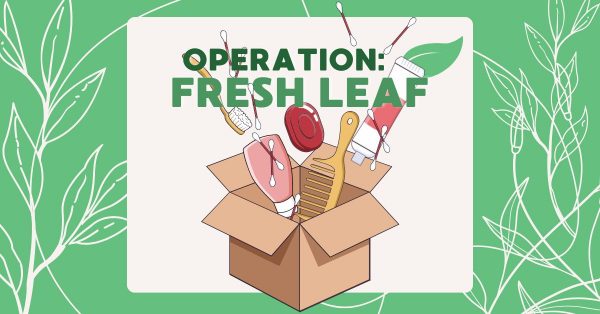We are pleased to announce our newest safety program called R.O.A.D Where our Purposeful Observation Focus Program (POP) focuses on injury reduction, R.O.A.D focuses on accident reduction.
5 Keys to the Smith System
- Aim High in Steering
- Get the Big Picture
- Keep Yours Eyes Moving Like
- Leave Yourself an Out
- Make Sure They See You
1. Aim High in Steering
Even though all 5 keys are equally important, Aiming High in Steering is listed first because identifying existing, and potential hazards in front of you helps you properly prepare by recognizing the hazard, understanding your defense, and acting correctly in time to avoid a collision. Early identification not only can help you prevent collisions but permits others behind and around you to slow down and prepare.
Aiming high in steering helps you identify the conditions you will be driving into.
On the open road, look at least 15 seconds down the road
- This will provide you advanced warning of situations that are, or may, develop in front of you.
- If you cannot see 15 seconds in front of you, look to the next hill or curve, and practice “what if”. “What if in that curve or just after it where I cannot see, there is a traffic back up or a road obstacle that I need to prepare for to safely stop. Or what kind of hazard could there be on the other side of the hill? How should I approach that hill, so I have time to react and inform others of the hazard? What should I do to be prepared to do to avoid a collision?”
In local or city traffic, look in front of you at least the next 3 city blocks.
- Practice “what if” and watch for hazards such as vehicles pulling from the curb, vehicle doors opening, pedestrians approaching a crosswalk, pedestrians that may not be paying attention, etc. There are literally thousands of hazards that can develop that we must be ready to defensively and properly address.
2. Get the Big Picture
Each of these 5 keys all work together and must be practiced in each turn of the wheel. While you aim high in steering, you need to view the road as a whole – not just a few feet in front of you.
While aiming high and scanning ahead, do not forget the sides and rear of your vehicle. Consistently update your information by practicing “what if”.
- Check your mirrors every 5 to 8 seconds so you know what is approaching from the sides and rear, as well as what is in front of you. Clean your mirrors before each and every trip to see more clearly to the sides and rear. Cleaning the windshield and side windows will help provide clearer visibility in dark or rainy conditions.
- Do not focus attention on insignificant objects. They are a distraction and typically do not pose a safety threat. This can be billboards, pedestrians safely out of your way, looking at an airplane, etc.
- Stay alert to the relevant information that can help you make well-informed decisions to prevent a crash, such as approaching intersections, other vehicles that appear to be distracted or driving erratically, pedestrians that may walk or ride into your path, etc.
- Eliminate obstructions in front of you by establishing proper following distance. The general practice is: 1 second for every 10 feet of vehicle length and never less than 7 seconds. Count using, “1-Mississippi, 2-Mississippi, 3-Mississippi,” etc. Tailgating others is letting them tell you how to drive your vehicle, and that can provoke you into a collision with them. This collision will be preventable on your part.
- “Be aware of your surroundings at all times” may seem obvious to say, but road conditions and traffic conditions can and do change quickly. We must take nothing for granted and be prepared for the changes.
- Distracted drivers are just as dangerous as intoxicated ones. Erratic and angry drivers make up a large portion of the traffic we see daily, so avoid major accidents by noticing how other drivers behave on the road.
3. Keep Your Eyes Moving
Stay alert while driving. Regular eye movement prevents you from getting into a “daydreaming” state. Once this occurs, you will have declining alertness and not recognize hazards as quickly.
- Focusing on any object for too long starts to give you tunnel vision, which shrinks your ability to view activity in your peripheral vision.
- Scan all intersections before entering them. Watch for vehicles that may run red lights, stop signs, or yield signs. Watch for pedestrians crossing against the light or do not realize you are approaching because they are so distracted. Are vehicles in front of you slowing down to make a turn or stopped because they are waiting for traffic to clear to make a turn? Remember, intersections are also entrances to parking lots, driveways, and alleys, which must be approached with the same degree of caution as a regular intersection.
- Keep your eyes moving every 2 seconds, so you know what is around you at all times.
- Avoid distractions while driving. This includes thinking about non-driving related events and daydreaming. Being distracted “only for a second” has caused more collisions than you can think of. In reality, most people are distracted for at least 4 seconds, which is like driving blind to your surroundings for 323 feet. When a driver says, “I looked down for a just second, and when I looked back up, traffic was stopped in front of me, and I did not have time to stop.” This tells us that either the driver was distracted for much longer than one second (which is still too long), he was not using the proper following distance, or BOTH!
- Recognize and avoid drivers, pedestrians, bicyclists, and others that seem to be distracted.
- As you identify hazards or potential hazards, practice “what if” and be prepared.
4. Leave Yourself an Out
As you are doing these steps, you will start to recognize existing and potential hazards. As these hazards start to be contemplated, think about how you can avoid a crash should a situation turn bad. Is there room to maneuver on the shoulder? Is the shoulder too soft or sloped too much to support a truck? Do I have room on the other side of me should the other vehicle start to drift over? All of this requires knowledge of your surroundings, approaching traffic, traffic to your sides and behind you, the conditions around you and the road and weather conditions. The best solution is to maintain proper space around you.
- The safest position in traffic is with few or no vehicles around you. If you find yourself in a cluster of other vehicles, slow down just a mile an hour or two for just long enough for the traffic to move ahead of you and out of your way. I promise that this brief slow-down will not affect your pick-up or delivery times.
- Choose the proper lane and adjust speed accordingly to maintain your space cushion. Take into consideration the road and weather conditions as well.
- If you lose part of the cushion, work to keep at least the front and one side open. Slowing down will help maintain a safety cushion.
- Avoid tailgaters. If they do not go around you, increase your following distance at least by another second to the vehicle in front of you. If you should need to slow down or stop, the additional time will give the tailgating motorist additional time to notice you and act correctly in time, so they do not hit you.
5. Make Sure They See You
- Determine early if there is the existence of potential danger. Practice “what if.”
- Alert others as soon as practical, so they have time to identify your presence and anticipated moves. Before a lane change, turn your blinker on for at least 3 blinks before you move. This will give you an additional opportunity to double and triple check to make sure the path you are moving into is clear and recheck your blind spots. It also provides the other motorists time to react to your intent. Yes, some may speed up and possibly not permit you to lane change right away. If they do, do not get upset. It is best to let that person in front of you. Never attempt to take the right-of-way. Anytime you deviate from your lane, you are responsible for your actions. Likewise, if someone wants to lane change into the lane you are in, give them the room they need and regain your following distance behind them once they are in front of you.
- Use your lights, turn signals, or horn (where appropriate) to help establish eye contact with others. Note, eye contact does not mean they will heed your warning. Remember, defensive driving is driving despite the conditions around you and the actions of others.
- Know where the blind spots are on your vehicle and where they are on other vehicles. Stay out of the blind spot of other vehicles. Make sure they see you, and you see them.
Remember, you are the company’s most valuable asset, and it is most important to us for you to return to your family, loved ones, and friends safely. Just as importantly, we want those you share the road with to do the same.





